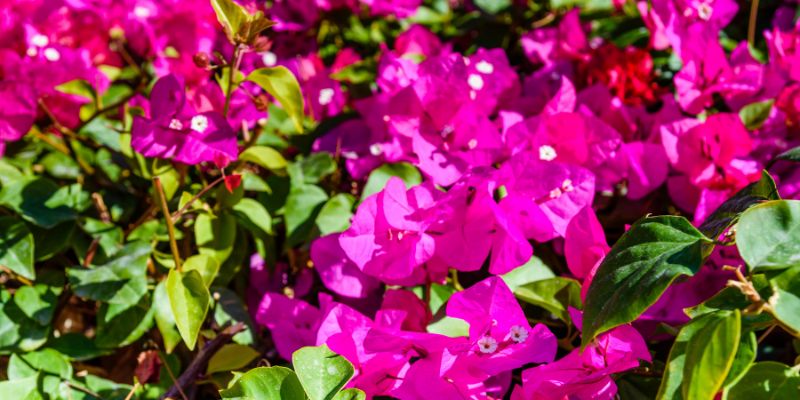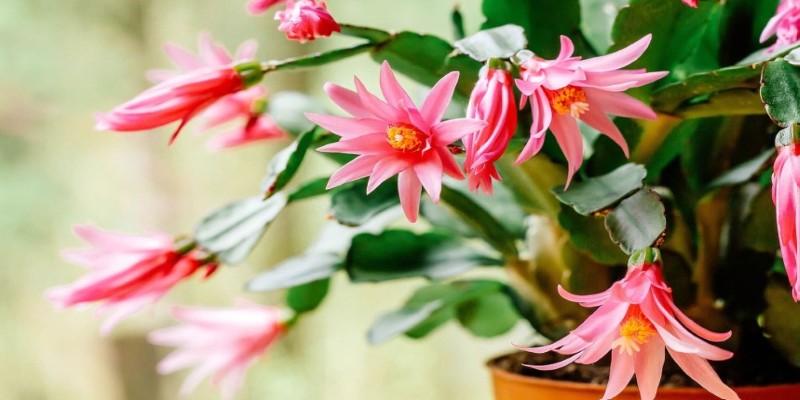Have you ever considered how to make your garden more colorful and lively? The solution could be found in the beautiful world of Bougainvillea. Are you ready to start growing and planting these lovely flowering plants to bring color to your outdoor oasis?
In this detailed guide, we'll go over the step-by-step method of planting Bougainvillea, providing insights and ideas to help your garden flourish with the fascinating beauty of this gorgeous floral wonder. We also discuss how to plant and grow Bougainvillea in pots. So, are you ready to learn the secrets of growing and planting Bougainvillea for a perfectly beautiful garden?
The first important step in growing Bougainvillea is to dig a planting hole. This creates the conditions for a growing and stable plant. Start by preparing the planting space. Here's how: Dig a hole twice the width of the Bougainvillea's root ball. This broad width allows the roots to grow, supporting healthy root development. Matching the hole's depth to the root ball's height is equally important.
This coordination provides an open and welcoming environment for the roots, setting the basis for the Bougainvillea to grow and develop. By properly carrying out this phase, you establish the basis for a strong bougainvillea in your yard, with strong roots ready for future development and brightness.
After digging the planting hole, the next vital step is to improve the soil. This is done by adding nutrients to the soil, changing it into a perfect setting for your Bougainvillea. This approach is simple but effective: add nutrient-rich materials like fertilizer or well-rotted manure to the dugout hole.
These nutrients do wonders by improving soil's nitrogen availability and moisture retention. A nutrient-rich base offers your Bougainvillea the necessary components for healthy growth and general health. By filling your soil with beneficial nutrients, you establish the conditions for a healthy bougainvillea that grows in a fertile and well-nourished environment.

One of the most important steps in planting your Bougainvillea is gently removing it from its container. Take great care while handling the plant to avoid causing damage to the sensitive root system. Handle the Bougainvillea gently to prevent causing additional damage to the roots.
This careful procedure guarantees the plant transfers smoothly from the container to its new location. Creating a stress-free environment during this time allows the Bougainvillea to solidify itself in the soil, promoting healthy and solid development. Remember, a little care through this process goes a long way toward maintaining your plant's health.
Set it in the created hole after gently removing your Bougainvillea from its container. Aim toward the center, ensuring the top of the root ball aligns with the soil surface. This thoughtful positioning offers ideal soil contact, allowing the plant to adapt more smoothly.
Correct positioning at this critical stage facilitates Bougainvillea's absorption into new surroundings, increasing the chance of healthy growth and colorful blooming. Having the time to place your plant correctly can significantly improve its overall development and adaption to the soil.
After carefully filling the hole with the soil mixture and lightly pushing it down, you minimize air pockets and provide proper soil-to-root contact for the newly planted Bougainvillea. This stage is critical for the plant's successful adjustment to its new habitat.
After filling, make sure to water the Bougainvillea properly. This thorough watering helps to settle the soil around the roots, giving vital moisture throughout the early stages of development. Maintaining equal moisture in the soil is critical for the plant's establishment and a good start in its new environment.
Bougainvillea grows on soils that are slightly dry to moderately damp. To avoid root rot, allow the soil to dry between waterings.
During the growth season, water thoroughly when the top layer of soil feels dry to the touch. Consider watering bougainvillea in pots more frequently, especially during hot weather.
Fertilize Bougainvillea using a balanced, all-purpose fertilizer every 6-8 weeks during the growth season. Choose a phosphorus-rich fertilizer for boosted flowering. Avoid using too much nitrogen, which can cause leaves to develop faster than blooms.

Regular pruning is essential for maintaining form and producing many blooms. Pruning after each flowering cycle helps to shape the plant and remove wasted blooms. Wear gloves to avoid thorns. People can grow Bougainvillea from cuttings.
Attach bougainvillea shoots to a fence or trellis to help them grow upward. Bougainvillea plants have wide vines that require additional support when climbing fences, trellises, or buildings. If you prefer a vertical growth pattern, thread bougainvillea branches through trellis or fence openings.
Alternatively, use strong twine or cloth strips to secure shoots to a stake or vertical support. Because bougainvillea vines lack tendrils and do not naturally cling, common tying along the vine as it develops guarantees regular guiding in the desired direction. It is important to remember that Bougainvillea lacks tendrils that allow it to wrap around or climb objects independently.
Pest and disease management includes monitoring common pests, including aphids, scale insects, and caterpillars. Treat immediately with insecticidal soap or neem oil. Maintain proper air circulation to avoid fungal infections and overwatering.
Bougainvillea is sensitive to cold and may lose leaves in colder locations. Protect container-grown plants against the cold by covering them with fabric or bringing them indoors. Prune sparingly in late winter to improve form and remove damaged growth. Care for Bougainvillea is very essential.
Make 6-8 inch cuttings from healthy tips, remove the lower leaves, dip the cut end in rooting hormone, and plant in well-drained soil. Maintain continuous moisture until roots form.
Finally, developing the colorful beauty of Bougainvillea in your garden requires careful planting, soil enrichment, careful handling of the plant during transfer, strategic placement, and sufficient hole filling and watering.
Following the early phases, continuous care involves water management, proper fertilization, common pruning, vertical growth support, pest and disease control, winter protection, and stem-cutting propagation. Follow these methods to transform your garden into a lively and attractive area for all seasons. Enjoy gardening with Bougainvillea!

By Frederica/Feb 02, 2024

By Eleanor/Apr 08, 2024

By Susan Kelly/Feb 25, 2024

By Georgia Vincent/Jun 17, 2025

By Eleanor/May 12, 2024

By Triston Martin/Apr 24, 2024

By Madison Evans/May 22, 2025

By Lucy Lee/Feb 28, 2024

By Georgia Vincent/Nov 10, 2024

By Amelia Martin/Mar 09, 2025

By Frederica/Dec 02, 2024

By Elva Flynn/May 13, 2025